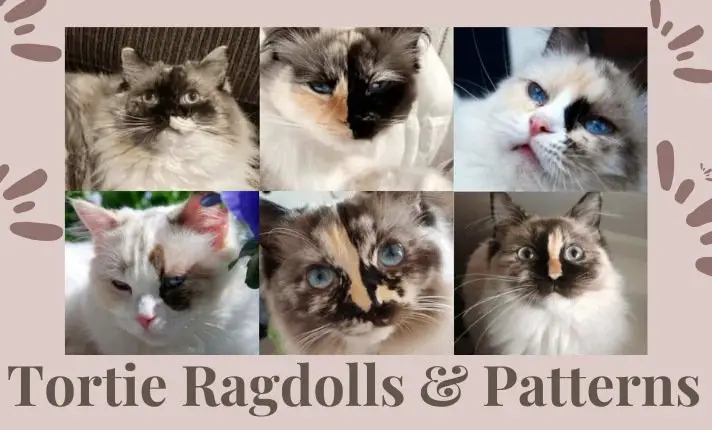Tortie Ragdoll cats, also called Tortoiseshell Ragdolls or Tortie Point Ragdolls, are among the most unique and beautiful variations within the Ragdoll breed. Known for their gorgeous coat patterns and calm, affectionate demeanor, these cats have been capturing the hearts of cat lovers everywhere.
This guide aims to provide you with everything you need to know about these captivating felines, from their genetics and personality to coat patterns and adoption tips. Whether you’re considering adding a Tortie Ragdoll to your family or are just fascinated by this breed, this comprehensive guide is here to help.
Breed Overview
What is a Tortie Ragdoll Cat?
The term “Tortie” is short for tortoiseshell, a reference to the distinct patchy color pattern of these cats that resembles the mottled shell of a tortoise. This name is used to describe the mix of colors—typically black, red, and cream—that appears in their fur, often in beautiful random patterns. These unique colorations are created through complex genetics, resulting in a coat that looks like a masterpiece (painted) by nature.
Tortie Ragdolls stand out from other Ragdoll varieties due to their multi-color coats, which contrast against the typically solid or bi-colored coats of other Ragdolls. Tortie patterns are always unique, ensuring that no two Tortie Ragdolls look the same.
Genetics Behind Tortie Ragdoll Coloring
The tortoiseshell pattern in Tortie Ragdolls results from complex genetics involving the X chromosome. Since the genes that produce tortoiseshell patterns are carried on the X chromosome, almost all Tortie Ragdolls are female. Male Torties are extremely rare and are often the result of a genetic anomaly.
The interplay between the Ragdoll breed’s coloration genes and the tortoiseshell pattern results in the beautiful marbled effect that Tortie Ragdolls are known for.
Tortie Ragdoll Kittens
Tortie Ragdoll kittens are often born with a much lighter coat, which will darken as they grow. At birth, the tortie pattern may not be immediately apparent; it develops more vividly over the first few weeks and months of the kitten’s life.
The color points on a Tortie Ragdoll kitten continue to change and develop as they grow older. The darker colors become more prominent as they mature, and the patchy tortoiseshell patterns become more distinctive. You might see the colors gradually become richer, and the unique blend of black, red, cream, and other colors becomes clearer as they grow.
The majority of Tortie Ragdoll kittens are female, due to the genetics of tortoiseshell coloring. Male torties are extremely rare
Tortie Ragdoll Cat: Personality & Temperament
All Ragdolls are gentle, affectionate, and tend to go limp when picked up—hence the name “Ragdoll”—Tortie Ragdolls have some unique twists to their temperament.
Many owners find that Tortie Ragdolls tend to have a spunky, spirited personality. Their tortoiseshell coloring is often associated with a bit of extra “tortitude,” which means they might be more playful, inquisitive, and sometimes even a little sassy compared to other Ragdolls. This makes for a fun and engaging companion who keeps their owner entertained with playful antics.
That said, they maintain the classic Ragdoll traits of being affectionate, loyal, and relaxed. They enjoy spending time around their favorite humans, whether it’s lounging on the couch or following them from room to room. They often seek out cuddles and lap time, making them great for owners looking for a loving, affectionate pet.
Tortie Ragdolls are also known to be highly adaptable and get along well with children and other pets. They are rarely aggressive and often enjoy interactive play. This mix of laid-back and playful personality traits makes them perfect for families, as they can adapt to both high-energy play and quiet, relaxed moments
Different Patterns of Tortie Ragdoll Cats
Tortie Ragdolls can come in several different color variations, each with its own unique charm. Some of the most common types include:
Tortie point Ragdoll
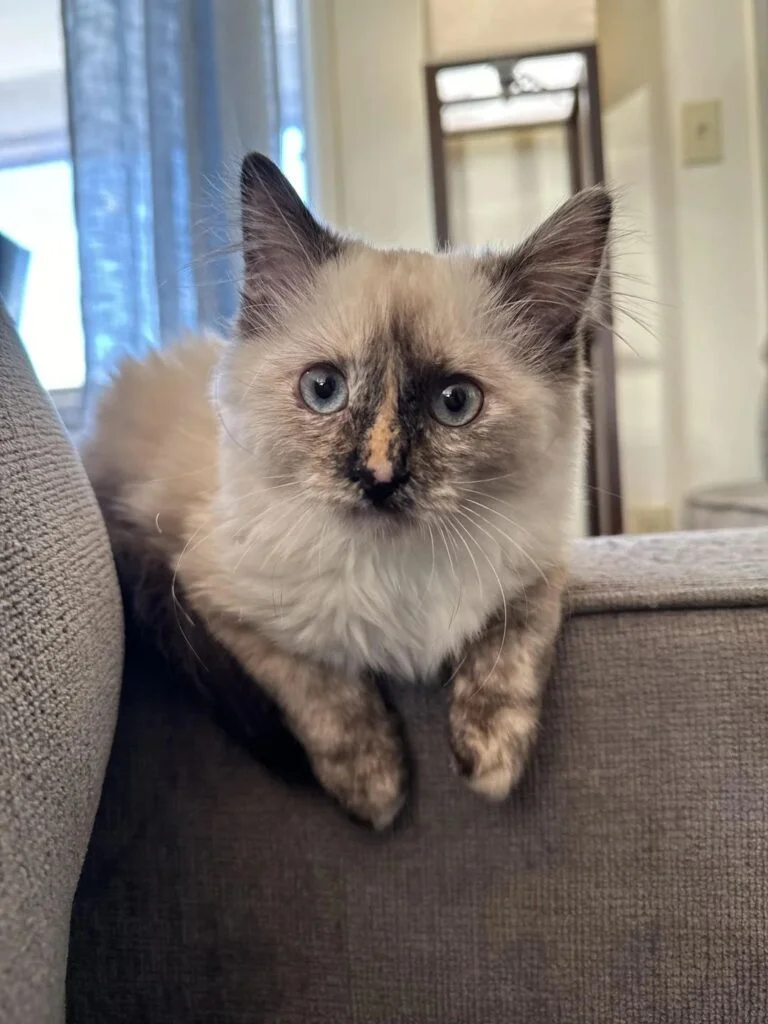
This type of Tortie Ragdoll has a tortoiseshell pattern (a mix of black, red, and cream colors) on their “points”—the ears, face, paws, and tail. The rest of the body is a lighter color, which makes the colorful points stand out more. If you see a cat with lighter body fur and tortie-colored face and extremities, it is likely a Tortie Point Ragdoll.
Blue Tortie Ragdoll
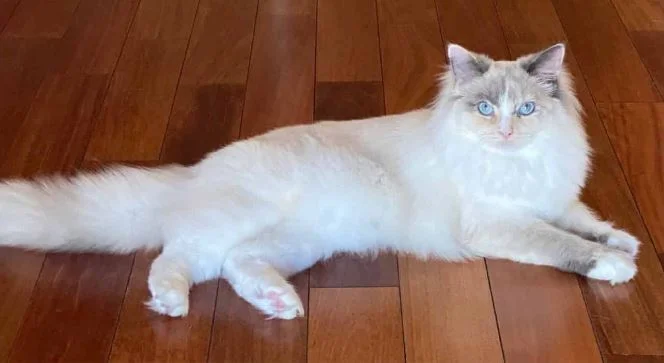
Blue Tortie Ragdolls have a mix of blue and cream colors. The “blue” here is actually a diluted form of black, giving it a grayish-blue appearance. This mix of soft blue and cream makes them look very gentle and pastel-like. If the cat has patches of gray-blue mixed with cream, then it is a Blue Tortie Ragdoll.
Chocolate Tortie Ragdoll
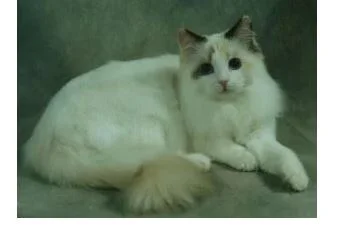
A Chocolate Tortie Ragdoll has warm chocolate brown fur mixed with red and cream patches. This combination creates a rich, warm color that looks very different from the other types. If the patches are warmer brown like chocolate, with hints of red and cream, then it’s a Chocolate Tortie Ragdoll.
Seal Tortie Ragdoll
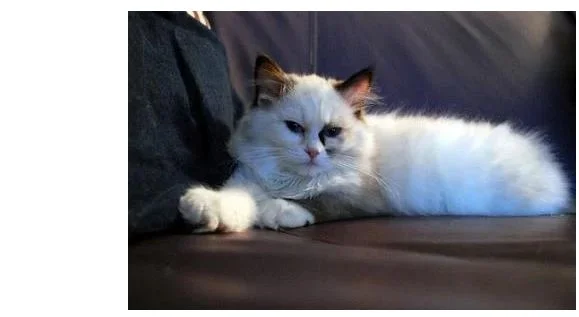
These Ragdolls have a base color of dark brown (called “seal”) with patches of black, red, and cream. The colors are more vivid compared to the blue tortie, giving the Seal Tortie a more dramatic appearance. If the cat has a mix of dark browns, reds, and creams, it is a Seal Tortie Ragdoll.
Lilac Tortie Ragdoll
Lilac Tortie Ragdolls have a pale gray color with a pinkish tone, mixed with cream and soft red. This combination gives them a very delicate, soft look. The lilac color is a diluted form of chocolate, making it lighter.
Adopting a Tortie Ragdoll
If you’re thinking about adding a Tortie Ragdoll to your family, there are a few options:
CFA and TICA Recognition
The Tortie Ragdoll cat is recognized by major feline organizations such as the Cat Fanciers’ Association (CFA) and The International Cat Association (TICA). These organizations ensure breed standards are maintained, and they host events where you can meet breeders and learn more about this unique breed.
- CFA and TICA Registrations: Ensure the breeder is registered with reputable cat associations like the Cat Fanciers’ Association (CFA) or The International Cat Association (TICA), which maintain breed standards and ethical breeding practices.
- Breeders: Make sure to choose a reputable breeder who tests for common genetic health issues and can provide a healthy kitten.
- Adoption: Consider adopting through a rescue organization or a shelter. While Tortie Ragdolls are rarer in shelters, it is still possible to find one in need of a home.
When adopting a Tortie Ragdoll, be prepared for an initial investment in food, grooming supplies, toys, and vet visits.
Are Tortie Ragdolls Good with families and other pets?
Tortie Ragdoll cats generally make excellent companions for families and get along well with other pets. Known for their gentle and affectionate nature, they often form strong bonds with their human family members, including children. Their calm temperament and patience make them ideal companions for households with young children, as they typically tolerate handling and enjoy interactive play.
When it comes to other pets, Tortie Ragdolls are usually sociable and can adapt well to living with other cats or dogs. Early socialization and gradual introductions help ensure a harmonious relationship. Their laid-back demeanor and friendly disposition contribute to their ability to coexist peacefully with other animals, making them a versatile choice for multi-pet households.
Conclusion
The tortie Ragdoll is a captivating feline that combines the best of both worlds – the Ragdoll’s beloved traits and the striking tortoiseshell coat pattern. With their vibrant colors, piercing blue eyes, and affectionate personalities, these cats have captured the hearts of cat enthusiasts worldwide. Whether you’re drawn to their “tortietude” or their cuddly lap-loving nature, the tortie Ragdoll is a truly special breed that is sure to bring joy and companionship to any loving home.
If you enjoyed this guide, feel free to share it with others who might be interested in Tortie Ragdolls, and don’t forget to subscribe for more helpful guides and cat care tips.
FAQs
Q: What is the difference between a Tortie Ragdoll and a calico Ragdoll?
A: The main difference between a Tortie Ragdoll and a calico Ragdoll is the distribution of colors. While Tortie Ragdolls have patches of black and orange or cream colors in their coat, calico Ragdolls have patches of black, white, and orange or cream colors.
Q: Are tortie Ragdoll cats more expensive than other Ragdoll variations?
Yes, tortie Ragdoll kittens can be more expensive than other Ragdoll variations due to their relative rarity.

Hey guys, My name is Simon Smith. I’m from Canada and live near Victoria
I live with my sweet family and have 20+ Ragdolls of different types. I love them as my children. My profession is as a hotel manager.
I love to keep Ragdolls and grow their breeder case. I have 7 years of experience.
I’m an expert in cat care. So, I’m here to provide you with new information about my cats daily. This is my blog website, so I request that you kindly visit our site daily.
If you’re a Ragdolls lover and you have any questions or confusion about cats, text me on the Contact Us page or Gmail.
Thank u
